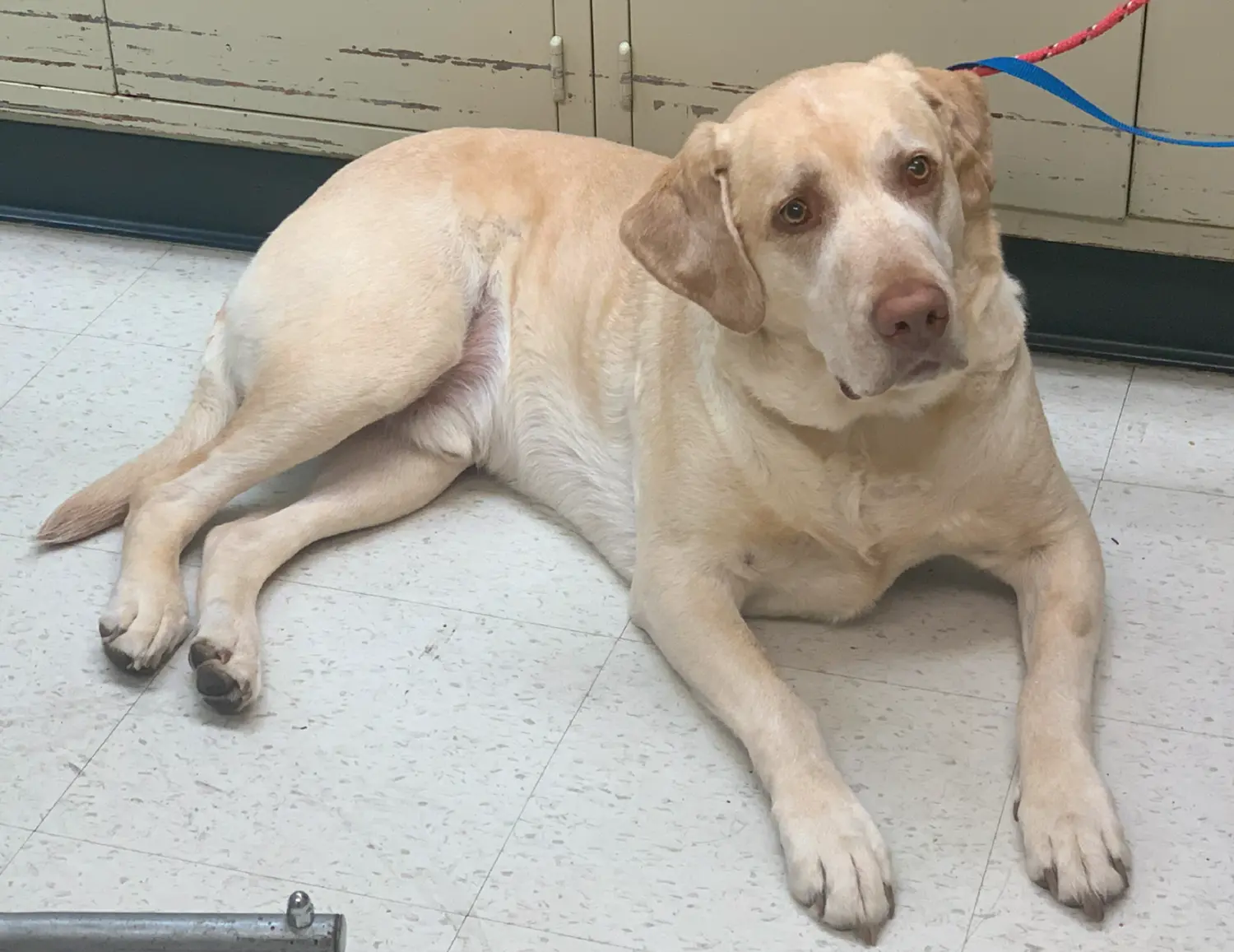




Sam’s Case Study
By Kristen Kellar-Graney, M.S.
Photos provided by Kubanda Cryotherapy
 abradors and lipomas go hand in hand, or, in Sam’s case, leg. This eight-year-old, outgoing, sweet pup had an 18-month history of a slow-growing mass on his left forearm measuring four by two centimeters. Sam’s owner was relieved to learn, following fine needle aspiration (FNA), that the tumor was a benign lipoma but was still concerned that it was growing. Conflicted by knowing that it might ultimately cause pain or mobility issues yet wanting to avoid surgical resection for the benign mass, Sam’s owner turned to a new-to-veterinary medicine option; subcutaneous cryoablation.
abradors and lipomas go hand in hand, or, in Sam’s case, leg. This eight-year-old, outgoing, sweet pup had an 18-month history of a slow-growing mass on his left forearm measuring four by two centimeters. Sam’s owner was relieved to learn, following fine needle aspiration (FNA), that the tumor was a benign lipoma but was still concerned that it was growing. Conflicted by knowing that it might ultimately cause pain or mobility issues yet wanting to avoid surgical resection for the benign mass, Sam’s owner turned to a new-to-veterinary medicine option; subcutaneous cryoablation.
Sam underwent this outpatient procedure in 2023 as an enrollee in an AVMA Animal Health Study listed “Percutaneous cryoablation to minimize growth in benign and malignant canine and feline tumors” at Johns Hopkins Hospital. Prior to enrolling in the trial, pre-procedure blood work and a three-view chest radiograph series with radiologist interpretation were performed to ensure that Sam was an ideal candidate for the trial. With a clean bill of health, Sam was scheduled for the procedure.
Approximately one day after his cryoablation, his owner reported that he showed no discomfort and that the lipoma had shrunk considerably. His puncture site was scabbed, clean and dry. Sam recovered well during the post-treatment period, though six months and 10 pounds of weight-gain later (attributed to family lifestyle), some regrowth of his lipoma was noted.
Although forms of cryoablation have been used in human medicine for centuries, its application in veterinary medicine has been limited to topical treatments, primarily due to cryogen gas costs and storage capabilities. Carbon dioxide-based cryotherapy freezes to temperatures as cold as -70oC, which is much colder than established lethal temperatures for most cell types significant in veterinary medicine.
A clinical trial using subcutaneous cryoablation for the treatment of canine mammary tumors is anticipating publication later this year. Many other benign and malignant subcutaneous masses are being treated with cryoprobes as a part of the veterinarian’s armamentarium. And, just this past January, cryoablation as an adjuvant therapy for marginally excised tumors was mentioned in surgical oncology continuing education lectures.
When considering patients who may need to forgo surgical resection, subcutaneous cryoablation offers a new option for tumor treatment in general veterinary practices.

